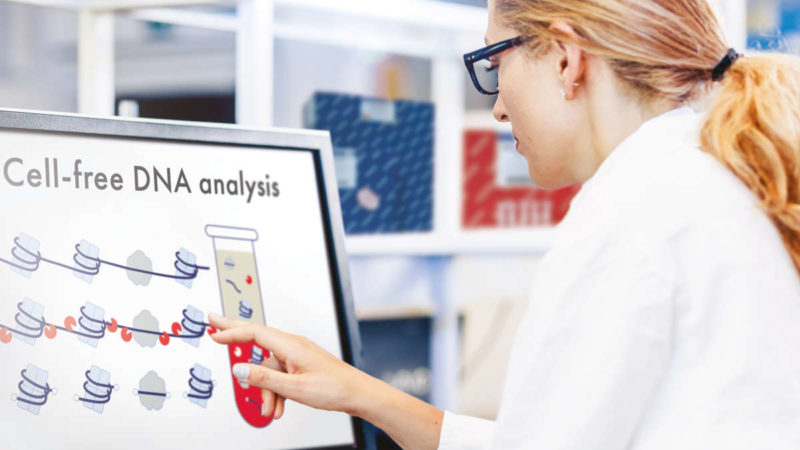Cell-free DNA (cfDNA) analysis has rapidly emerged as a powerful tool in various fields of research, diagnostics, and clinical applications. This promising technology enables the non-invasive detection of genetic aberrations and disease-associated biomarkers, revolutionizing the way we approach precision medicine. However, to ensure the accuracy and reliability of cfDNA analysis, it is crucial to optimize the collection and storage methods throughout the entire workflow. In this comprehensive guide, we delve into the different types of collection tubes available, along with their specific advantages and limitations. By understanding the intricacies of collection tube selection, researchers and clinicians can enhance the efficiency and quality of cfDNA analysis, ultimately facilitating groundbreaking discoveries and improving patient outcomes.
Types of Collection Tubes for Cell-Free DNA Analysis
1. EDTA Tubes
- EDTA (ethylenediaminetetraacetic acid) tubes are commonly used for cell-free DNA analysis.
- The inner coating of EDTA tubes prevents coagulation and preserves the integrity of the DNA.
- These tubes are available in different sizes for different volumes of blood samples.
- EDTA tubes are recommended for plasma cell-free DNA analysis.
2. Cell-Free DNA Collection Tubes
- Specifically designed for cell-free DNA analysis, these tubes have unique additives that stabilize and protect DNA during storage and transportation.
- These tubes come in different colours, indicating the type of additive used.
- Examples of additives used in these tubes include ethylenediaminetetraacetic acid (EDTA), sodium citrate, and heparin.
- The choice of additive depends on the downstream analysis method and the preference of the laboratory.
3. Cell-Free DNA BCT (Blood Collection Tubes)
- Cell-Free DNA BCT tubes are specifically designed for long-term cell-free DNA preservation.
- These tubes include a proprietary reagent that immediately stabilizes cell-free DNA upon collection.
- Cell-Free DNA BCT tubes can be used for various downstream applications, such as cfDNA sequencing, prenatal testing, and liquid biopsy.
- These tubes provide high-quality DNA for analysis even when samples are stored at room temperature.
Advantages and Disadvantages of Different Cell-Free DNA Collection Tubes
Advantages of Different Cell-Free DNA Collection Tubes
- Increased yield: Certain collection tubes, such as the Cell-Free DNA BCT, have been specifically designed to enhance the yield of cell-free DNA. These tubes contain a stabilizing reagent that prevents the release of genomic DNA from blood cells, leading to higher levels of cell-free DNA for analysis.
- Preservation of sample integrity: Collection tubes like the PAXgene Blood ccfDNA tube are designed to preserve the integrity of cell-free DNA by inhibiting the action of DNases, enzymes that degrade DNA. This ensures that the cell-free DNA remains intact and undamaged during transportation and processing.
- Compatibility with different downstream applications: Some collection tubes, such as the Streck Cell-Free DNA Collection Tube, are compatible with a wide range of downstream applications, including PCR, sequencing, and methylation analysis. This versatility allows researchers to choose the collection tube that best suits their specific analysis needs.
Disadvantages of Different Cell-Free DNA Collection Tubes
- Cost: Certain collection tubes, such as the Cell-Free DNA BCT, can be more expensive compared to standard blood collection tubes. This additional cost may be a limiting factor for researchers or healthcare providers working on a tight budget.
- Additional processing steps: Some collection tubes, like the PAXgene Blood ccfDNA tube, require additional processing steps compared to standard blood collection tubes. This can add complexity and time to the workflow, especially when analyzing large numbers of samples.
- Limited availability: Certain types of cell-free DNA collection tubes may not be widely available at all institutions or healthcare settings. This can limit the options for researchers and clinicians, who may have to resort to using alternative collection tubes that may not provide optimal results.
Best Practices for Collection and Storage of Cell-Free DNA Samples
1. Select the appropriate collection tubes to maintain sample integrity
- Use tubes specifically designed for cell-free DNA collection to ensure accurate analysis.
- Choose tubes with anticoagulant additives, such as EDTA or citrate, to prevent blood from clotting and damaging the DNA.
- Ensure that the tubes are free from any contaminants that could interfere with the analysis.
2. Follow proper collection techniques to minimize sample degradation
- Use sterile techniques to avoid introducing foreign DNA into the sample and minimizing contamination.
- Collect samples promptly after obtaining informed consent, as delay can lead to DNA degradation.
- Avoid excessive exposure to light, temperature fluctuations, or freeze-thaw cycles that could impact sample stability.
3. Store cell-free DNA samples under optimal conditions
- Maintain samples at a temperature of -20°C or below to preserve DNA integrity.
- Use DNA stabilizing buffer or kits to further protect the DNA during storage.
- Clearly label and organize samples to ensure easy retrieval and prevent mix-ups.
By following these best practices for collecting and storing cell-free DNA samples, researchers can optimize the quality and reliability of their analysis. Proper collection techniques and appropriate storage conditions are crucial to maintain the integrity of the DNA for accurate and meaningful results.
Optimizing Cell-Free DNA Analysis: Choosing the Right Collection Tube for Your Research or Clinical Application
Choosing the Right Collection Tube for Your Research or Clinical Application
When it comes to optimizing cell-free DNA (cfDNA) analysis, selecting the appropriate collection tube is crucial for accurate results. Here are some key factors to consider:
- Stabilization: Look for collection tubes with additives that can stabilize cfDNA, preventing degradation during transportation and storage. Stabilization agents, such as EDTA or citrate, help maintain the integrity of cfDNA, ensuring reliable analysis.
- Yield and Recovery: Different collection tubes may vary in their efficiency of cfDNA capture. It is essential to choose a tube that maximizes cfDNA yield and recovery. Consider tubes with optimized reagents or specialised coatings that enhance cfDNA capture and preservation.
- Testing Methodology: The choice of collection tube should align with the methodology employed for cfDNA analysis. For example, if using next-generation sequencing, select a tube compatible with this technology to avoid any compatibility issues that may arise.
By carefully considering these factors and choosing the right collection tube, researchers and clinicians can enhance the accuracy and reliability of their cfDNA analysis, ultimately improving patient outcomes and advancing scientific knowledge.










